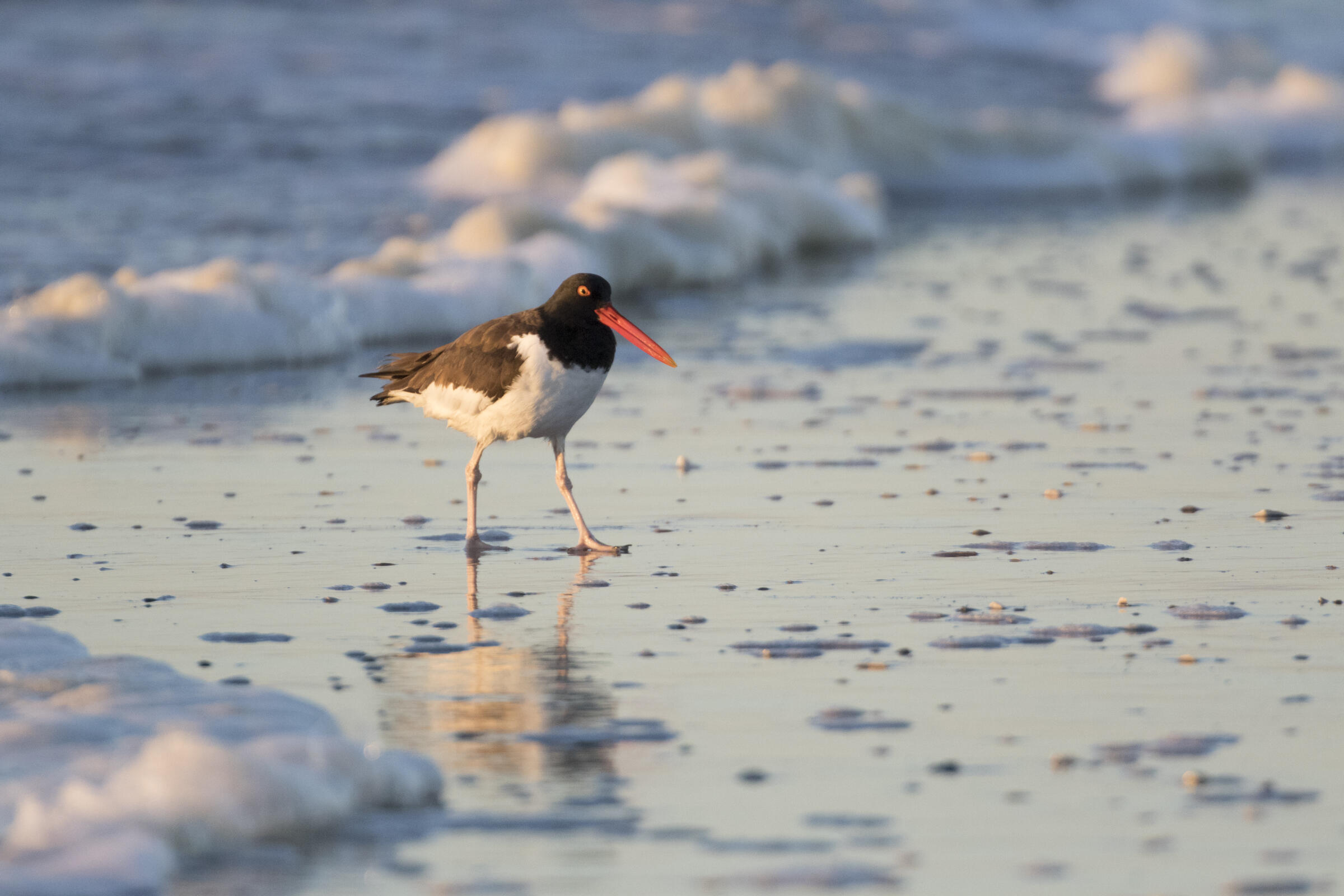Florida is one of the most biodiverse states in the U.S., and many avid birdwatchers plan special trips here to catch a glimpse of some of our flashier species, including Anhinga, Swallow-tailed Kites, and Sandhill Cranes. However, shorebirds are both overlooked and vulnerable. Shorebirds depend on the land near the water’s edge to rest, feed, and nest. Unfortunately, as the sea level rises and Florida’s beaches continue to be developed for human use, shorebirds are continually losing access to the habitats they need to survive.
In the Florida Panhandle, one of the most distinctive shorebird species is the American Oystercatcher, a stout, black-and-white bird with a long, bright, red-orange bill and lanky, pinkish-gray legs. Though they mainly eat small clams and marine invertebrates too small to be worth digging for human consumption, their name has sometimes brought them into conflict with fishermen who might mistakenly believe that the oystercatchers are driving them out of business.
In actuality, the local American Oystercatcher population is in decline. Though they are tough birds, they have a reputation among birders and biologists as scaredy-cats, and are very fearful of people, dogs, and other predators. Often, beachgoers walking along a stretch of shore that is home to a pair of oystercatchers may never even notice that they are trespassing in the birds’ front yard, because the birds will see them coming from a mile away and will make themselves scarce. This habit keeps adult birds away from danger, but it can also stress them when they must devote time and energy to constantly escape. If they are trying to keep a nest of eggs warm enough to hatch, the constant movement on and off the nest can expose eggs and young chicks to predators and to temperatures that are too hot or too cold.
Luckily, it’s not all bad news for the American Oystercatcher. The United States has a set of historic laws on the books that protect them and their fellow shorebirds. The Migratory Bird Treaty Act, first written into law in 1918 to protect all of America’s native birds from unlawful harvest, protects them and their eggs from being harassed, captured, or killed under penalty of federal law. While this law and others protect them from direct harm by people, more indirect pressures from loss of habitat may be harder to manage.
Audubon Florida and the Florida Fish and Wildlife Conservation Commission actively monitor American Oystercatchers throughout the state, and especially in the Panhandle, where recent declines have made them a species of concern. If you take the time to observantly and politely watch an oystercatcher from a comfortable distance with a pair of binoculars or a spotting scope (remember, they’re scaredy-cats!) you may notice a set of brightly colored and numbered bands on their legs. Researchers use reported sightings of these banded individuals to track the oystercatcher population and keep tabs on where a certain bird’s home territory is located and whether it has been able to nest and raise chicks successfully or not.
The more that each of us can do to help these birds be successful by learning about them and giving them enough space to thrive, the more we can help boost their numbers for future generations to see and enjoy.
To report a banded American Oystercatcher click here.






